 |
 |
 |
 |
 |
<< subjects
>> |
 |
 |
03.-
Some Basque American Historic Facts
03.1
BASQUE GOVERNORS
The United States is, after all, only a little more than two hundred
years old. In the west, its southern border did not have its present
form until 1853. In 1848 Upper California, until then Mexico, became
part of the Union under the Treaty of Guadalupe-Hidalgo. When California
passed into American hands, there were Basques already present.
Several of its governors, first under Spanish administration and
then under Mexican, had been Basque. Among them, Diego de Borica
y Retegui, from Vitoria-Gasteiz, first governor of Upper California;
Jose Joaquin de Arrillaga, from Aia (Gipuzkoa), and Pablo Vicente
Sola, from Arrasate (Gipuzkoa), during the Spanish period; and again
Sola himself, first governor under Mexico, of the territory; and
the governors Jose Maria de Echeandia and Manuel Micheltorena, both
born in the New World.
|
 |
 |
| 03.2
BASQUE CALIFORNIOS
Before California’s inclusion into the US, there were other
Basques (sailors, traders, and ecclesiastics) who had taken part
in the adventure of the until-then sparsely populated territory.
(As late as 1800 the population of California was fewer than one
thousand.) Basques such as Jose Antonio Aguirre, who became an American
in New Orleans and who, along with his brother-in-law Miguel de
Pedrorena and another three Americans, was one of "those who
planned and were the first owners of what today is known as the
city of San Diego". Or Cesareo Lataillade, born in Donibane
Lohizune (Lapurdi) and a highly successful trader during the Gold
Rush, established the Viceconsul of Spain in 1846 in Santa Barbara,
and the French Consul in 1848. Or Jose Domingo Indart, owner of
the vessel "Keoneana", which operated between California,
Acapulco, and Callao. Or his nephew Ulpiano Indart, who came to
be a respected businessman and politician, and was treasurer for
many years in the county of Santa Barbara, where he died in 1902.
|
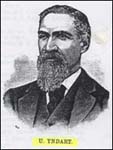 |
| 03.3
THE GOLD RUSH
When Upper California became part of the US, and gold was discovered
in the mountains, there was an influx of fortune seekers from all
over the world. California in 1848 had an European population of
no more than fifteen thousand. By 1852 the figure had increased
to 93,000, and in 1860 it was 380,000. As to the number of Basques,
Douglass and Bilbao in Amerikanuak, Basques in the New World provide
evidence to the effect that several hundred entered California between
1845 and 1851. In 1850 and subsequent years there were Basques working
in the area, and by 1852 there were Basque union movements in some
of the mining camps
|
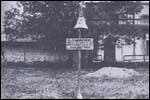 |
| 03.4
MINERS AND SHEEPHERDERS
Not all Basques that arrived in booming California were miners.
In many cases their pursuits were in other directions. We have already
mentioned the setting up of the first hotels, while other Basques
opened local businesses. Others took up sheepherding, some among
them Juan Indart, Bernardo Altube, Jean-Baptiste Arrambide, Antonio
de Harispuru, Bernardo Ypar, and Pedro Altube, set up cattle firms
and acquired ranches in various counties.
|
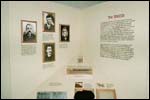 |
| 03.5
MIGUEL LEONIS
Mention apart might be made of Miguel Leonis. He is so much a legendary
part of Californian history that a foundation bearing his name has
been established. His ranch has been restored and is today shown
to visitors much as it is believed to have been in the late 19th
century. Known also as "the Basco", Leonis was said at
the time to be "of unique character, strong as a bull, full
of determination to wipe out intruders." The kanboarra, who
in charge of an armed party apparently used doubtful methods to
achieve his ends, came to control an extensive area to the north
of Los Angeles. When he died in 1889 he left a legacy of one million
dollars, most of which ended up, following lawsuits, in the hands
of lawyers.
|
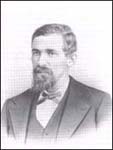 |
| 03.6
SPREADING TO THE WHOLE WEST
Basque names were so prominent in the western sheep business that
a non-Basque expert regarded the Basques in 1858 as its founders.
Already in the 1850's there were Basque sheepherders working in
Cahuenga Valley (today Hollywood). Following years of sacrifice,
some of them became rich owners. By the 1860's the Basques were
established in southern California. By the 1980's they were in the
central and northern zones, from where they spread to Nevada, Idaho,
Oregon, Utah, Montana, Wyoming, Arizona, New Mexico, and other western
states also reaching Texas.
|
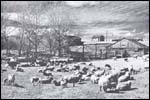 |
|
|
 |
 |
 |
|
|






